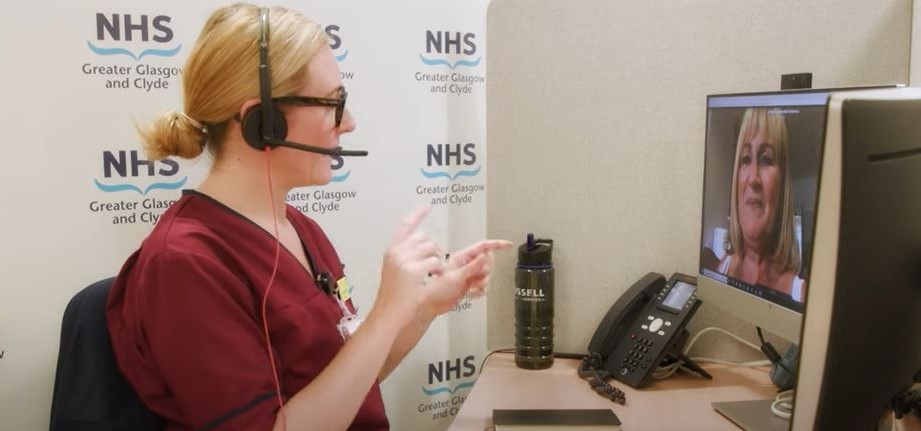
Less than a fifth of patients using a health board’s virtual A&E service went on to attend hospital emergency departments last year.
Figures for NHS Greater Glasgow and Clyde’s Flow Navigation Centre (FNC) show that only 16 per cent of those put through to the virtual service were referred to a physical A&E during 2023.
Patients who do not have a life-threatening condition, but think they might need to go to A&E, can access the FNC by calling NHS24 on 111.
They will be given a video or telephone consultation with a nurse or doctor in NHSGGC’s FNC team from the comfort of their own home rather than having to travel to and wait to be seen at an emergency department.
And, if an in-person exam or treatment is required, they will be given a scheduled appointment at a minor injuries unit, other appropriate specialist service, or a planned arrival time at A&E if this is the right service to access.
It comes as NHSGGC aims to ensure patients are given the right care, in the right place, to free up capacity in physical emergency departments for those with the most urgent need.
The health board’s virtual pathways are designed to help reduce bottlenecks at A&E, improve flow throughout hospital wards and give patients a better experience.
Last year, more than 20,000 patients used the virtual A&E service, with 45 per cent discharged without attending hospital.
A further 38 per cent were referred to a minor injuries unit, and 1 per cent were referred to another specialist service.
It means the service prevented around 17,000 attendances at physical A&Es which were better dealt with in other parts of the health service.
However despite the FNC being available, significant numbers of patients are continuing to attend physical emergency departments when their needs could be met appropriately by another service.
NHSGGC is encouraging people whose conditions are not life-threatening to use the FNC to help alleviate pressure on physical A&Es.
NHSGGC’s FNC is based at the Queen Elizabeth University Hospital but operates for the whole health board area and is staffed by a team of expert Advanced Nurse Practitioners and Emergency Medicine Doctors.
The team can treat a whole host of illnesses and injuries including, but not limited to:
- Any limb injuries: shoulder, elbow, wrist, hand, hip, knee, ankle, foot
- Minor head injuries
- Chest injuries and back injuries
- Falls
- Accidental overdoses
- DVT
- Cellulitis
- Foreign bodies in the ear, nose, eyes, under the skin
- Back pain
- Gynaecology and early pregnancy problems
- Burns
- Wounds
- Suture (stitches) problems
- Dressing issues
As part of its ABC winter campaign, NHSGGC is encouraging people to be aware of the best places to get help if they or someone they know needs it:
Ask yourself: Do I need to go out? For information on keeping yourself well and treating minor illnesses and injuries from home, go to NHS Inform or download the NHS24 app.
Be aware: There is help for many conditions right on your doorstep. Your local GP, pharmacy, dentist or optician offer a range of services.
Call 111: If it’s urgent, or you’re not sure, call NHS24 on 111. They’ll make sure you get the help you need.
Unless it’s an emergency, think ABC before going to A&E.
The health board is also encouraging people to help their loved ones get home from hospital when they are ready to free up capacity on wards and prevent bottlenecks.
Dr Scott Davidson, Deputy Medical Director for Acute Services at NHS Greater Glasgow and Clyde, said: “The virtual A&E is one of a number of virtual pathways which are helping our patients get seen and treated faster.
“While pressure on our hospital sites remains at an all-time high, enabling thousands of patients to be treated away from physical A&E departments has made a significant impact on the front-door at our hospitals and will continue to play a crucial role in the way we deliver healthcare going forward.
“We’d urge any patient who thinks they need to come to A&E to consider using this service, among other urgent care provisions such as pharmacies, GPs, and the NHS Inform website.”
More information about the virtual A&E Flow Navigation service is available here.
